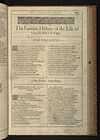Shakespearean history
In the First Folio, the plays of William Shakespeare were grouped into three categories: comedies, histories, and tragedies. The histories help define the genre of history plays, along with other contemporary renaissance playwrights.[1] The histories might be more accurately called the "English history plays" and include the outliers King John and Henry VIII as well as a continuous sequence of eight plays covering the Wars of the Roses. These last are considered to have been composed in two cycles. The so-called first tetralogy, apparently written in the early 1590s, deals with the later part of the struggle and includes Henry VI, parts one, two & three and Richard III. The second tetralogy, finished in 1599 and including Richard II, Henry IV, Part 1, Henry IV, Part 2 and Henry V, is frequently called the Henriad after its protagonist Prince Hal, the future Henry V.
The folio's classifications are not unproblematic. Besides proposing other categories such as romances and problem plays, many modern studies treat the histories together with those tragedies that feature historical characters. These include Macbeth, set in the mid-11th century during the reigns of Duncan I of Scotland and Edward the Confessor, and also the Roman plays Coriolanus, Julius Caesar, Antony and Cleopatra and the legendary King Lear.
List of Shakespeare's histories
English histories
As they are in the first folio, the plays are listed here in the sequence of their action, rather than the order of the plays' composition. Short forms of the full titles are used.
- King John
- Edward III (not included in folio but often attributed to Shakespeare)
- Richard II
- Henry IV, Part 1
- Henry IV, Part 2
- Henry V
- Henry VI, Part 1
- Henry VI, Part 2
- Henry VI, Part 3
- Richard III
- Henry VIII
Roman histories
As noted above, the first folio groups these with the tragedies.
Other histories
As with the Roman plays, the first folio groups these with the tragedies. Although both are connected with British history, and based on similar sources, they are usually not considered part of Shakespeare's English histories.
Sources
The source for most of the English history plays, as well as for Macbeth and King Lear, is the well known Raphael Holinshed's Chronicle of English history. The source for the Roman history plays is Plutarch's Lives of the Noble Grecians and Romans Compared Together, in the translation made by Sir Thomas North in 1579. Shakespeare's history plays focus on only a small part of the characters' lives, and also frequently omit significant events for dramatic purposes.
Politics
Shakespeare was living in the reign of Elizabeth I, the last monarch of the house of Tudor, and his history plays are often regarded as Tudor propaganda because they show the dangers of civil war and celebrate the founders of the Tudor dynasty. In particular, Richard III depicts the last member of the rival house of York as an evil monster ("that bottled spider, that foul bunchback'd toad"), a depiction disputed by many modern historians, while portraying the usurper, Henry VII in glowing terms. Political bias is also clear in Henry VIII, which ends with an effusive celebration of the birth of Elizabeth. However, Shakespeare's celebration of Tudor order is less important in these plays than his presentation of the spectacular decline of the medieval world. Moreover, some of Shakespeare's histories—and notably Richard III—point out that this medieval world came to its end when opportunism and Machiavellianism infiltrated its politics. By nostalgically evoking the late Middle Ages, these plays described the political and social evolution that had led to the actual methods of Tudor rule, so that it is possible to consider the English history plays as a biased criticism of their own country.
Interpretations
John F. Danby in Shakespeare’s Doctrine of Nature (1949) examines the response of Shakespeare’s history plays (in the widest sense) to the vexed question: ‘When is it right to rebel?’, and concludes that Shakespeare’s thought ran through three stages: (1) In the Wars of the Roses plays, Henry VI to Richard III, Shakespeare shows a new thrustful godlessness attacking the pious medieval structure represented by Henry VI. He implies that rebellion against a legitimate and pious king is wrong, and that only a monster such as Richard of Gloucester would have attempted it. (2) In King John and the Richard II to Henry V cycle, Shakespeare comes to terms with the Machiavellianism of the times as he saw them under Elizabeth. In these plays he adopts the official Tudor ideology, by which rebellion, even against a wrongful usurper, is never justifiable. (3) From Julius Caesar onwards, Shakespeare justifies tyrannicide, but in order to do so moves away from English history to the camouflage of Roman, Danish, Scottish or Ancient British history.
Danby argues that Shakespeare’s study of the Machiavellian prince is key to his study of history. Richard III, the Bastard in King John, Hal and Falstaff are all Machiavellian princes, characterised in varying degrees of frankness by the pursuit of "Commodity" (i.e. advantage, profit, expediency).[2][3] Shakespeare at this point in his career pretends that the Hal-type Machiavellian prince is admirable and the society he represents historically inevitable. Hotspur and Hal are joint heirs, one medieval, the other modern, of a split Falconbridge. Danby argues, however, that when Hal rejects Falstaff he is not reforming, as is the common view,[4] but merely turning from one social level to another, from Appetite to Authority, both of which are equally part of the corrupt society of the time. Of the two, Danby argues, Falstaff is the preferable, being, in every sense, the bigger man.[5] In Julius Caesar there is a similar conflict between rival Machiavellian princes: the noble Brutus is a dupe of his Machiavellian associates, while Antony’s victorious “order”, like Hal's, is a negative thing. In Hamlet king-killing becomes a matter of private rather than public morality—the individual’s struggles with his own conscience and fallibility take centre stage. Hamlet, like Edgar in King Lear later, has to become a “machiavel of goodness”.[6] In Macbeth the interest is again public, but the public evil flows from Macbeth’s primary rebellion against his own nature. “The root of the machiavelism lies in a wrong choice. Macbeth is clearly aware of the great frame of Nature he is violating.”[7]
King Lear, in Danby's view, is Shakespeare’s finest historical allegory. The older medieval society, with its doting king, falls into error, and is threatened by the new Machiavellianism; it is regenerated and saved by a vision of a new order, embodied in the king’s rejected daughter. By the time he reaches Edmund, Shakespeare no longer pretends that the Hal-type Machiavellian prince is admirable; and in Lear he condemns the society we think historically inevitable. Against this he holds up the ideal of a transcendent community and reminds us of the “true needs” of a humanity to which the operations of a Commodity-driven society perpetually do violence. This “new” thing that Shakespeare discovers is embodied in Cordelia. The play thus offers an alternative to the feudal-Machiavellian polarity, an alternative foreshadowed in France’s speech (I.1.245–256), in Lear and Gloucester’s prayers (III.4. 28–36; IV.1.61–66), and in the figure of Cordelia. Cordelia, in the allegorical scheme, is threefold: a person; an ethical principle (love); and a community. Until that decent society is achieved, we are meant to take as role-model Edgar, the Machiavellian prince of patience, of courage and of "ripeness". After King Lear Shakespeare’s view seems to be that private goodness can be permanent only in a decent society.[8]
The "Wars of the Roses" cycle

"The War(s) of the Roses" is a phrase used to describe the civil wars in England between the Lancastrian and Yorkist dynasties. Some of the events of these wars were dramatised by Shakespeare in the history plays Richard II; Henry IV, Part 1; Henry IV, Part 2; Henry V; Henry VI, Part 1; Henry VI, Part 2; Henry VI, Part 3; and Richard III. In the twentieth and twenty-first centuries there have been numerous stage performances including:
- The first tetralogy (Henry VI parts 1 to 3 and Richard III) as a cycle;
- The second tetralogy (Richard II, Henry IV parts 1 and 2 and Henry V) as a cycle (which has also been referred to as the Henriad); and
- The entire eight plays in historical order (the second tetralogy followed by the first tetralogy) as a cycle. Where this full cycle is performed, as by the Royal Shakespeare Company in 1964, the name The War(s) of the Roses has often been used for the cycle as a whole.
- A 10-play history cycle, which began with the newly attributed Edward III, the anonymous Thomas of Woodstock, and then the eight plays from Richard II to Richard III, was performed by Pacific Repertory Theatre under the title Royal Blood, a phrase used throughout the works. The entire series, staged over four consecutive seasons from 2001 to 2004, was directed by PacRep founder and Artistic Director Stephen Moorer.
- A conflation of the eight plays by Tom Wright and Benedict Andrews under the title The War of the Roses was performed by the Sydney Theatre Company in 2009.[9]
The tetralogies have been filmed for television five times, twice as the entire cycle:
- for the 1960 UK serial An Age of Kings directed by Michael Hayes. Featuring David William as Richard II, Tom Fleming as Henry IV, Robert Hardy as Henry V, Terry Scully as Henry VI, Paul Daneman as Richard III, Julian Glover as Edward IV, Mary Morris as Queen Margaret, Judi Dench as Princess Catherine, Eileen Atkins as Joan la Pucelle, Frank Pettingell as Falstaff, William Squire as The Chorus and Justice Shallow, and, shortly before he gained fame as James Bond, Sean Connery as Hotspur.
- for the 1965 UK serial The Wars of the Roses, based on the RSC's 1964 staging of the Second Tetralogy, which condensed the Henry VI plays into two plays called Henry VI and Edward IV. directed by John Barton and Peter Hall; and adapted by Hall. Featuring Ian Holm as Richard III, David Warner as Henry VI, Peggy Ashcroft as Margaret, Donald Sinden as York, Roy Dotrice as Edward and Jack Cade, Janet Suzman as Joan and Lady Anne and William Squire as Buckingham and Suffolk.
- Second Tetralogy filmed for the BBC Television Shakespeare in 1978/1979 directed by David Giles. Richard II was filmed as a stand-alone piece for the first season of the series, with the Henry IV plays and Henry V filmed as a trilogy for the second season. Featuring Derek Jacobi as Richard II, John Gielgud as John of Gaunt, Jon Finch as Henry IV, Anthony Quayle as Falstaff, David Gwillim as Henry V, Tim Pigott-Smith as Hotspur, Charles Gray as York, Wendy Hiller as the Duchess of Gloucester, Brenda Bruce as Mistress Quickly, and Michele Dotrice as Lady Percy.
- First Tetralogy filmed for the BBC Television Shakespeare in 1981 directed by Jane Howell, although the episodes didn't air until 1983. In the First Tetralogy, the plays are performed as if by a repertory theater company, with the same actors appearing in different parts in each play. Featuring Ron Cook as Richard III, Peter Benson as Henry VI, Brenda Blethyn as Joan, Bernard Hill as York, Julia Foster as Margaret, Brian Protheroe as Edward, Paul Jesson as Clarence, Mark Wing-Davey as Warwick, Frank Middlemass as Cardinal Beaufort, Trevor Peacock as Talbot and Jack Cade, Paul Chapman as Suffolk and Rivers, David Burke as Gloucester and Zoe Wanamaker as Lady Anne.
- for a straight-to-video filming, directly from the stage, of the English Shakespeare Company's 1987 production of "The Wars of the Roses" directed by Michael Bogdanov and Michael Pennington. Featuring Pennington as Richard II, Henry V, Buckingham, Jack Cade and Suffolk, Andrew Jarvis as Richard III, Hotspur and the Dauphin, Barry Stanton as Falstaff, The Duke of York and the Chorus in Henry V, Michael Cronin as Henry IV and the Earl of Warwick, Paul Brennan as Henry VI and Pistol, and June Watson as Queen Margaret and Mistress Quickly. The three Henry VI plays are condensed into two plays, bearing the subtitles Henry VI: House of Lancaster and Henry VI: House of York.
- Second Tetralogy filmed as The Hollow Crown for BBC2 in 2012 directed by Rupert Goold (Richard II), Richard Eyre (Henry IV, Parts 1 & 2) and Thea Sharrock (Henry V). Featuring Ben Whishaw as Richard II, Patrick Stewart as John of Gaunt, Rory Kinnear as Henry Bolingbroke (in Richard II) and Jeremy Irons as Henry IV, Tom Hiddleston as Henry V, Simon Russell Beale as Falstaff, Joe Armstrong as Hotspur, and Julie Walters as Mistress Quickly. The first tetralogy is set to be adapted in 2016.
Many of the plays have also been filmed stand-alone, outside of the cycle at large. Famous examples include Henry V, directed and starring both Laurence Olivier and Kenneth Branagh, Richard III by Olivier and Richard Loncraine (starring Ian McKellen) and Henry IV, Part I and Part II combined into Chimes at Midnight (with some scenes from Henry V, also known as Falstaff) directed by and starring Orson Welles.
References
- ↑ Ostovich, Helen; Silcox, Mary V; Roebuck, Graham (1999). Other Voices, Other Views: Expanding the Canon in English Renaissance Studies. ISBN 9780874136807. Retrieved 2014-08-07.
- ↑ Shakespeare, King John, II.1.574.
- ↑ John F. Danby, Shakespeare’s Doctrine of Nature – A Study of King Lear, 1949), pp.72–74.
- ↑ e.g. A.L.Rowse, Discovering Shakespeare, London, 1989; pages 92–93
- ↑ John F. Danby, Shakespeare’s Doctrine of Nature – A Study of King Lear, 1949), pp.57–101.
- ↑ John F. Danby, Shakespeare’s Doctrine of Nature – A Study of King Lear, 1949), p.151.
- ↑ John F. Danby, Shakespeare’s Doctrine of Nature – A Study of King Lear, 1949), p.167.
- ↑ John F. Danby, Shakespeare’s Doctrine of Nature – A Study of King Lear, (Faber, London, 1949). For B. S. Stephan's summary of Shakespeare’s Doctrine of Nature, see
- ↑ Review by Jack Telwes, Australian Stage, 16 January 2009
| ||||||||||
| |||||||||||||||||||||||||||||||||||||||||||||||||||||||||||||||||||||||||||||||||||||||||||||||||||||||||||||||||||||||||||||||||||||||||||||||||||||||||||||||||||||||||||||||||||||||||||||||||||||||||||||||||||||||||||||||||||||||||||||||||||||||||||||||||||||||||||||||||||||||||||||||||||||||||||||||||||||||||||||||||||||||||||||||||||||||||||||||||||||||||||||||||||||||||||||||||||||||||||||||||||||||||||||||||||||||||||||||||||||||||||||||||||||||||||||||||||||||||||||||||||||||||||||||||||||||||||||||||||||||||||||||||||||||||||||||||||||||||||||||||||||||||||||||||||||||||||||||||||||||||||||||||||||||||||||||||||||||||||||||||||||||||||||||||||||||||||||||||||||||||||||||||||||||||||||||||||||||||||||||||||||||||||||||||||||||||||||||||||||||||||||||||||||||||||||||||||||||||||||||||||||||||||||||||||||||||||||||||||||||||||||||||||||||||||||||||||||||||||||||||||||||||||||||||||||||||||||||||||||||||||||||||||||||||||||||||||||||||||||||||||||||||||||||||||||||||||||||||||||||
.png)
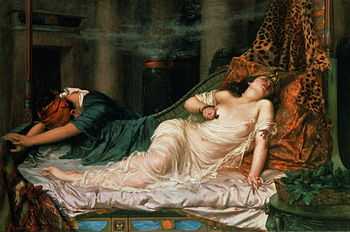
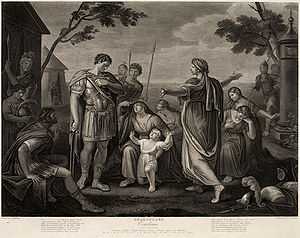
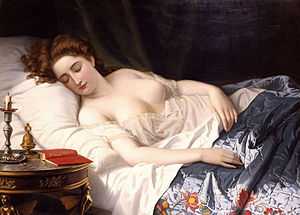

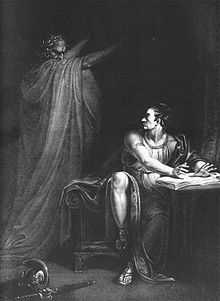



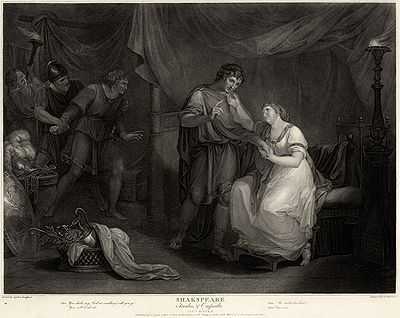
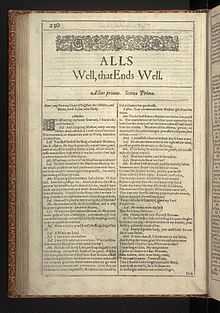
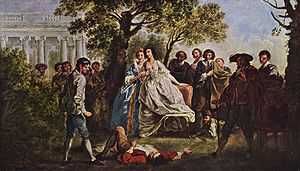

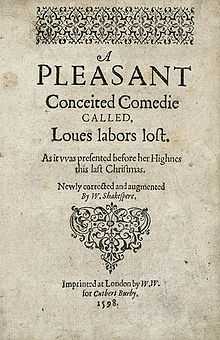



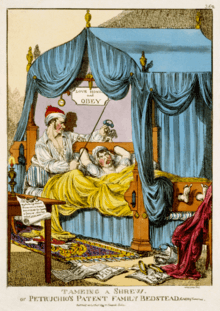



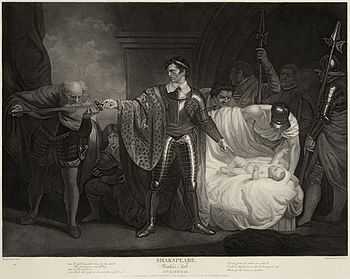

.jpg)
